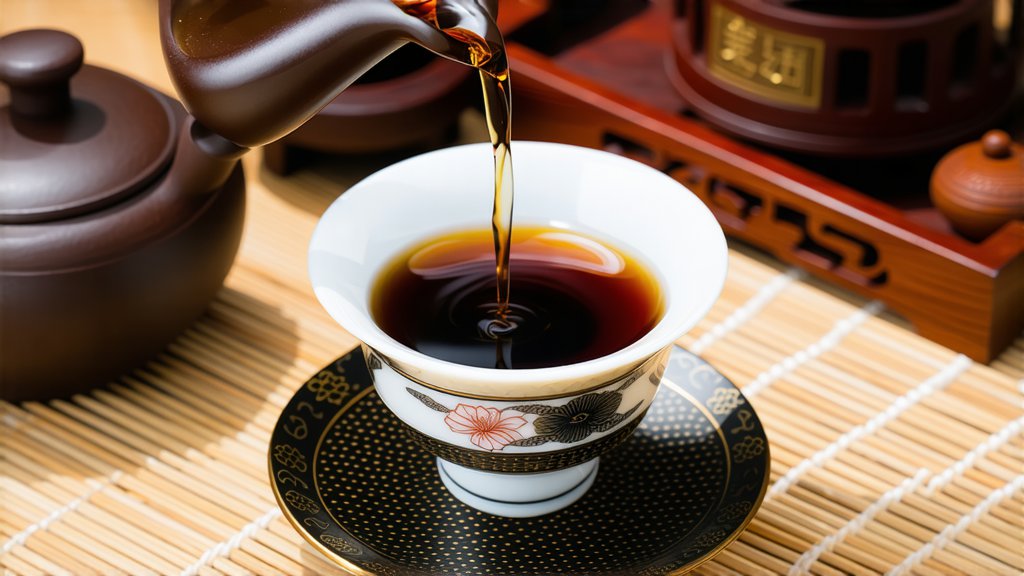
Keemun black tea, hailing from the picturesque landscapes of Qimen County in Anhui Province, China, stands as a testament to the rich heritage and artistry inherent in Chinese tea culture. This exquisite variety, often referred to as Qimen Red or Qimen Hongcha, has garnered international acclaim for its unique flavor profile and meticulous production process. In this exploration, we delve into the historical roots, diverse varieties, intricate craftsmanship, and the art of appreciating Keemun black tea, inviting global tea enthusiasts to embark on a sensory journey through one of China's most revered tea treasures.
Historical Legacy
The origins of Keemun tea trace back over 400 years, with its name derived from the ancient pronunciation of "Qimen," the county where it is primarily grown. During the Ming Dynasty (1368-1644), Qimen was already renowned for its high-quality teas, which were initially green teas known for their delicate flavor and aroma. It wasn't until the late 19th century that the production shifted towards black tea, driven by international demand and the opening up of China's markets. The transition marked a significant chapter in Keemun's history, transforming it into a staple of British afternoon tea and influencing the development of other black tea blends worldwide.
Varieties within Keemun
Keemun black tea encompasses several distinct grades and styles, each offering a unique interpretation of its signature sweet and spicy notes. Among these, the most celebrated are:
-
Keemun Hao Ya A: Often regarded as the pinnacle of Keemun quality, this grade features young leaves and buds that yield a complex brew with a smooth texture and a lingering aftertaste. Its golden tips contribute to a vibrant amber liquor color.
-
Keemun Hao Ya B: Following closely behind Hao Ya A in terms of quality, this grade maintains a similar flavor profile but may include slightly more mature leaves, resulting in a fuller body and a robust aroma.
-
Keemun Gong Fu: This grade emphasizes traditional handcrafting techniques, where skilled artisans carefully shape and roll the leaves. It offers a balanced taste with subtle fruitiness and a hint of smokiness.
Each variety showcases the versatility and depth of Keemun tea, catering to diverse palates and preferences among tea connoisseurs.
Crafting the Perfect Cup
The magic of Keemun black tea lies not only in its ingredients but also in the meticulous craftsmanship involved in its creation. The process begins with the careful selection of tea leaves from camellia sinensis var. assamica bushes, which thrive in the misty mountains of Qimen. Here’s an overview of the key steps:
-
Withering: Freshly picked leaves are spread out to wilt under controlled conditions, allowing them to lose moisture and become pliable for rolling. This step initiates the oxidation process, crucial for developing the tea's characteristic flavors.
-
Rolling: Using traditional methods or modern machinery, the leaves are rolled to break down cell walls, releasing enzymes that further facilitate oxidation. Rolling also shapes the leaves, contributing to the final appearance of the dried tea.
-
Oxidation: The rolled leaves are left to oxidize, a process during which polyphenols convert into theaflavins and thearubigins, imparting color, aroma, and taste to the tea. The degree of oxidation can vary, affecting the tea's strength and complexity.
-
Drying: Finally, the oxidized leaves are dried to reduce moisture content and stabilize the tea for storage and transportation. This step ensures the longevity of Keemun's flavors and aromas.
Art of Appreciation: Tasting Keemun
To truly appreciate Keemun black tea, one must engage in a ritualistic approach to tasting, akin to a traditional Chinese tea ceremony. Here’s a guide to savoring every nuance:
-
Warm the Teapot and Cups: Begin by rinsing your teapot and cups with hot water to enhance the tea's aroma and maintain its temperature.
-
Measurement: Use approximately 3 grams of loose leaf tea per 200ml of water for a standard brewing ratio.
-
Water Temperature: Heat water to around 95°C (203°F). Boiling water can scorch the delicate leaves, while cooler temperatures may under-extract flavors.
-
Steeping Time: For the first infusion, steep for about 2-3 minutes. Subsequent infusions can be extended gradually, as the leaves open up more with each brew.
-
Observation: Admire the deep amber hue of the liquor, a reflection of the tea's richness.
-
Aroma: Inhale deeply before sipping to capture the tea's sweet and spicy fragrance, often described as a blend of orchid, honey, and a hint of smoke.
-
Tasting: Take small sips, allowing the tea to coat your palate fully. Notice the initial sweetness, followed by a gentle spiciness and a smooth finish. Pay attention to how the flavors evolve with each sip and across multiple infusions.
-
Reflection: Take a moment to reflect on the experience, appreciating not just the taste but also the cultural heritage and craftsmanship encapsulated in each cup.
In conclusion, Keemun black tea is more than just a beverage; it is a bridge connecting past and present, tradition and innovation, and East and West. Its allure lies not only in its exceptional taste but also in the stories it tells of the land, people, and centuries-old practices that have shaped its existence. As you embark on your own journey with Keemun, whether as a novice or an expert, may each cup serve as a reminder of the profound beauty and complexity found within a simple leaf.